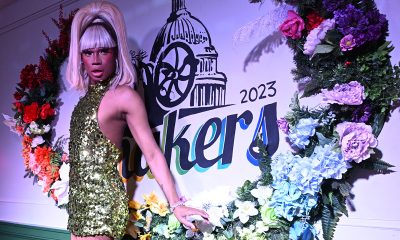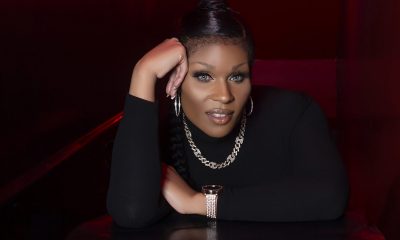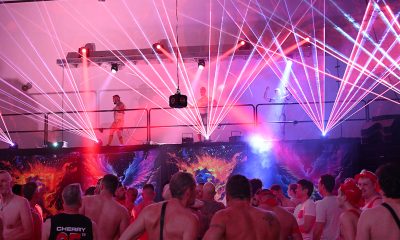a&e features
Mary Wilson shares Motown memories
Legendary Supremes singer in D.C. for Blues Alley engagement
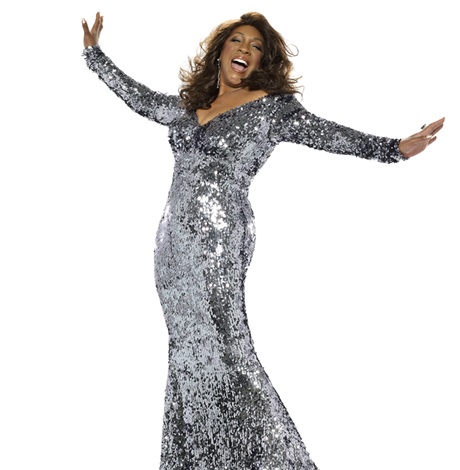
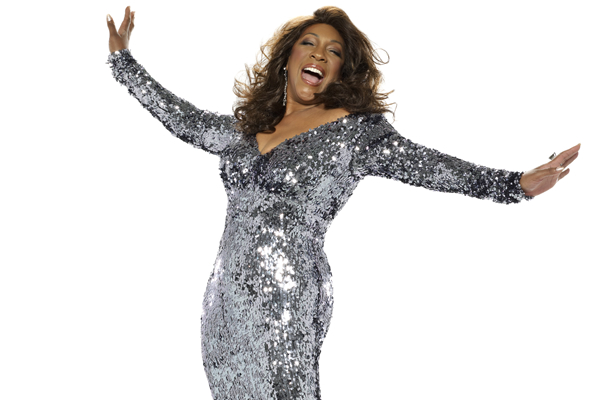
Mary Wilson says her Blues Alley engagement will feature standards, jazz and Motown hits. (Photo courtesy Blues Alley)
Now that we’re 50 years removed from the 1960s, there’s enormous interest in all things Motown.
Of course the label’s popularity never really went away but a flurry of recent events, from Broadway’s “Motown: the Musical” to exhibits of the Supremes’ legendary stage gowns to deluxe reissues of many of the label’s classic albums, point to a Motown fever burning as hot as ever.
Supremes founding member Mary Wilson — the only singer to stay in the group for its entire run — is in the midst of a four-night engagement at Washington’s Blues Alley. She spoke with the Blade by phone this week from her home in Las Vegas on a wide spate of topics from her recent dance hit, her stint on “RuPaul’s Drag Race,” her oft-misunderstood relationship with Diana Ross and more.
WASHINGTON BLADE: Tell us a little of what you have planned for your Blues Alley engagement, please.
MARY WILSON: It’s a combination. Last time I was there I believe I did my straight sort-of jazz show, so this time I will probably do some of the American songbook and some Supremes songs as well because I know a lot of people would like to hear that. So it will be a combination of all of that. I love doing ballads, you know, love songs. Also it’s Valentine’s week, so I have to honor that because I believe in love.
BLADE: Is it taxing to do two shows each night?
WILSON: I don’t normally do two shows so yeah, it really is. It’s a little harder now that I’m 72, almost 73. I’ll be 73 in March so it can be a little taxing because I’m used to doing one. But I love being on stage. I don’t have a problem performing it’s just, you know, the traveling and all that other stuff that makes it a little more difficult.
BLADE: On average, how much of the year do you spend on the road?
WILSON: I usually do about three to four gigs a month.
BLADE: It must have been gratifying to have a dance hit a little over a year ago when “Time to Move On” hit no. 23 on the Billboard dance chart.
WILSON: It was great. I mean, I didn’t even realize that was going to happen. We recorded that song years ago with a young man out of the Imagination group, Leee John. I think it was in 2002. Some beautiful people out in the San Francisco area, Sweet Feet Music, decided they wanted to release it. I was like, “Oh my God, OK.” So then we went in and did the video and they put it out and it charted. I was so surprised and elated that it charted. It was beautiful and wonderful.
BLADE: How did Sweet Feet even know about it?
WILSON: Well the Supremes fans are just everywhere. I don’t know. I think they knew Leee John. The Imagination may not have been as big here in the states, but they were big in the UK so they knew them.
BLADE: There was such a nice stash of Supremes album reissues and deluxe sets from Hip-O Select over several years but they seem to have suddenly stopped about two years ago. Do you know if any more are planned?
WILSON: I’m not sure. … I know Universal — I feel funny saying Universal instead of Motown — but I know they’re re-releasing our “Go-Go” album. I was just at Universal when I was in New York at the B.B. King club and I went and did some interviews there and they played me a lot of songs.
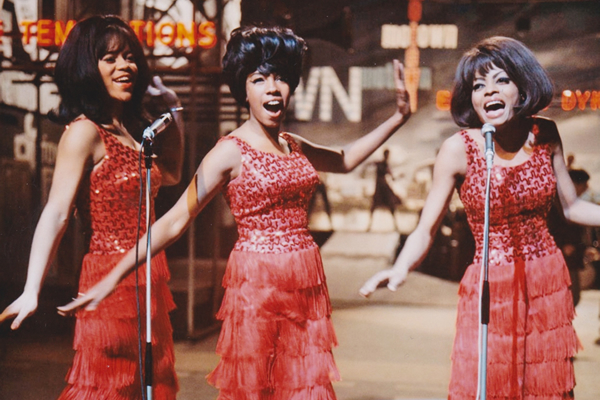
From left are Florence Ballard, Mary Wilson and Diana Ross. Wilson says tales of tension between the three original Supremes have been exaggerated over the years. (Photo courtesy Wilson)
BLADE: The bonus disc for the “I Hear a Symphony” expanded edition in 2012 had an entire 1966 Supremes concert recorded at the Roostertail in Detroit. Do you know how commonly Supremes concerts were recorded?
WILSON: I really don’t know. Things are showing up now that I didn’t even know had been recorded because this was before everyone had their cell phones and this and that.
BLADE: So you had the Supremes gowns in your possession all these years? It must have cost a fortune to store them all this time.
WILSON: This is true. Well yeah, I just had them in storage. I have a pretty large home here in Las Vegas so some I had in the basement but then it got to be too much so I had them in storage areas here. My daughter says I’m a hoarder but I say what I’m hoarding is worth a fortune. She never really understood it. … Some were in boxes. One of the famous ones I’m having restored. It was beaded on chiffon and just got so worn that the beads were falling off, so I’m having them repaired.
BLADE: Did you keep all the wigs too?
WILSON: Wigs not as much. They tend to get really old and then they’re no good. Pretty much everyone kept their own wigs throughout the years so I never really had a lot of those, but the gowns, yes. I do have everyone’s gowns except the ones that were stolen. … There was a lot of stuff stored at Motown where we originally stored them and when the building in Detroit was torn down, a lot of people just started taking stuff — pictures, masters, gowns. Some have landed elsewhere. There are a couple here in the Hard Rock Cafe casino in Vegas, so they’ve been all over the place. I don’t know how else they ended up here and there other than people just took them when the building was torn down. I even got a few of them back on eBay.
BLADE: There wasn’t as much Motown stuff in the National Museum of African-American History here in Washington as I would have thought. Were you ever in touch with its staff about having some Supremes items there?
WILSON: You know what, I’m a little disappointed because I offered them my gown exhibit to be displayed there and I never heard back from them. I made a presentation and everything. I guess they had so many things, so many artifacts, they couldn’t take everything so I understood, but I was disappointed. When I’m in D.C., I’m going to try and go see it. I’m very thrilled it’s there. I’m just not happy the Supremes gowns aren’t part of it.
BLADE: It seems insane to me that the Supremes never won a Grammy in the ‘60s. Was there some anti-Motown sentiment in the industry at the time or what?
WILSON: I really don’t know. It’s kind of hurtful when I hear of so many people having Grammys. We had 12 number one records but did not ever receive a Grammy. Three of our singles, much later, were inducted into the Grammy Hall of Fame, but that was all done after the fact. So yeah, I’m a little pissed on it.
BLADE: There are some Supremes B-sides like “Going Down for the Third Time” that sound to me like they could have been hits. Or some minor hits like “Some Things You Never Get Used To” seem like they should have charted higher. Are there any Supremes tracks you think could have been hits but weren’t released as singles or had the potential to chart higher than they did?
WILSON: I’ve never been one to know much about what’s a hit and what’s not a hit. I do think some of the songs were really quite good but for them to have been hits, I don’t really know. There were certainly a lot I really liked.
BLADE: So many elaborate sculptures and paintings have been done of the Supremes over the years. Which are your favorites?
WILSON: I receive so many beautiful pieces of art that people have done on us. One person who’s passed now, his name was Ted LeMaster did quite a few lovely paintings. I think I have four of them and they’re just absolutely gorgeous. I’m working on a coffee table book of the Supremes gowns so I should include some of those as well. There’s another guy and, oh gee, I may have to get you his name later because it’s not coming to me off the top of my head, but he does these Supremes dolls and they are just beautiful. There are lots of artists out there and they send things to me all the time. I have them all over my place here.
BLADE: How did you enjoy being a guest judge on “RuPaul’s Drag Race”?
WILSON: It was great. He was just wonderful. You know, gorgeous. He’s a big Diana Ross fan so it was almost like seeing Diane in a way because he kind of does her thing. He looks great and all that stuff and it was loads of fun. I met so many wonderful, or I should say gorgeous, so many gorgeous people.
BLADE: The Frontier shows, the last with Miss Ross, that became the “Farewell” album in 1970 — was that set list pretty much the Supremes show in 1969 or was some of the stuff you did there, like the “Aquarius” medley with all the audience sing-alongs, was that maybe just worked up for that engagement knowing so many celebrities would be present?
WILSON: No, that was pretty much our normal show we toured with that year. Everything we did there, we’d pretty much been touring with, yes.
BLADE: Do you keep in touch often with (former Supremes) Cindy Birdsong and/or (Ross replacement) Jean Terrell?
WILSON: Yes. Last year we had the gown exhibit at the Grammy museum and I invited all the ladies there for that. Jean Terrell came, Scherrie Payne was there and Susaye Greene. I keep up with Cindy but I don’t see her as often as I want since she’s in L.A. and I’m in Vegas but I spend a lot of time in L.A. so I see her when I’m there.
BLADE: Is she well?
WILSON: I don’t want to get too much into her personal things. She’s a little older and she’s had some health issues.
BLADE: Do you ever hear from (founding Supreme) Florence Ballard’s three daughters? (Ballard left the group in 1967 and died in 1976.)
WILSON: Yes, whenever I’m in Detroit, they always come out and we talk on the phone a lot actually. So yeah, I do keep up — well, I should say they keep up with me, let’s put it that way.
BLADE: Did you enjoy “Motown: the Musical”?
WILSON: I loved it. I thought it was wonderful. Obviously it was Berry Gordy’s perception of what was going on and everybody, you know, there’ve been all these books, everybody has their own way of looking at it, but it’s all true. It’s just different perceptions from different people. The musical is more Berry’s perspective so he’s obviously looking from the top down. We were looking from down to up, but it’s just the way different people perceived it. But I absolutely loved it. In fact just a week or so ago it opened in L.A. and I flew out there and attended the opening. I was also at the London opening and, of course, the New York opening was also great.
BLADE: It looked like there was a lot of warmth between you and Berry and Diana at the opening. Would you say feelings have mellowed over the years?
WILSON: There always was. Some things that are brought out further tend to be the more negative things. Things that were really great are not broadcast as much so people tend to think there was a lot more dislike there but that’s just not true. We were all very, very close. There were always things going on like maybe you didn’t like this … that didn’t mean that the love was not there. It always was. But we were all different, we all had our own opinions so a lot of times when you speak out, people say, “Oh my God, they’re having a fight, they hate each other,” and that’s just not true. It’s just different likes and dislikes.
BLADE: I’ve read a lot of the books — your books, Randy Taraborrelli’s books. It always seems like a handful of incidents get told and retold. When you think of all the hours you and Florence and Diana obviously spent together rehearsing, traveling and recording, there had to have been more peace than tension or you’d never have gotten anything done.
WILSON: Well that’s what I’m saying. Some of the things that were brought out and broadcast as if they were major, major things, it’s just not true. People think there’s some big feud between Diane and I and there really is not. It’s just that she’s gone her way and I’ve done my thing so no, we’re not close, but that’s just because over the last 50-some years, our lives have gone in several different directions. I love her as much as I love Flo. People tend to think I love Flo more because they view it as we worked together more on the choreography, on the harmony. We were always together. And now Florence is not here to protect herself, so I don’t talk about her a lot because of that. But I don’t love Flo anymore than I love Diane. I love them both as much as I love my own sister.
BLADE: Did you see Mary Wells much in her later years? Do you think she regretted leaving Motown so early?
WILSON: I saw Mary up to the very end of her life. I actually worked with her trying to do whatever we could in terms of her cancer bout. I don’t know — I never talked to her about that so I really don’t know.
BLADE: It’s staggering to me the amount of material the Supremes recorded in the ‘60s. You must have been in the studio constantly.
WILSON: Well, we were also on the road a lot, too. But yes, what happened sometimes is we would fly into Detroit, record a few songs and then fly right out. So yes, we did record a lot of songs.
BLADE: Now that so many have been released on these expanded editions, I’m sure there are some you have no memory of, right?
WILSON: Not just songs. Sometimes I see pictures that I can’t remember and yet there I am in the picture. It’s just because there were so, so many. There really were.
BLADE: So much has been made of (Motown session singers) the Andantes singing with Diana on Supremes studio material the last few years she was in the group. But you and Cindy obviously still had to learn the parts for TV and concerts. If that was seen as some sort of time-saving device, what was the rationale?
WILSON: There was a lot going on then. Diane was already starting to record songs for her departure, so a lot of times, it was for that reason. But then they’d decide to use some of the recordings on Supremes albums even though we hadn’t been there. That happened a lot. Other times we were out rehearsing with Jean Terrell for the new group, so it was almost like being in two groups there for a while. Cindy was also still fairly new in the group so there wasn’t a lot of cohesiveness those last couple years. And the producers, you know, it’s like this with a lot of my friends who are actors and actresses, a lot of times it’s the producers and writers who make these kinds of decisions and you’re not even in on the decision making in the group. And then of course, Motown was moving to L.A. so there was a lot of stuff going an and we were not really looked upon as a group anymore because obviously Diane was leaving and all. It had to do with a lot of that stuff.
BLADE: You and Florence always had such great harmony and obviously it was before the days of Auto-Tune and all the studio bells and whistles they have now. Did you have to learn to sing harmony or was it something you were able to do naturally?
WILSON: Well it wasn’t just me and Flo, it was me, Flo and Diane and we all sang harmony together a lot. That was really our style naturally. That’s what you did back in those days, you sang. You didn’t have anything else to rely on. We didn’t even need music. We did shows in the early years without music or maybe just with a guitarist, Marvin Tarplin. So no, it was very natural and we didn’t have any help in that department. Actually the Supremes were a very harmonic group in terms of our style, that’s what we did. I kind of hated later on when we lost that because it was something we’d been very good at. It’s hard to harmonize with just two people. Before when we had Diane and (early members) Betty (McGlown) and Barbara (Martin), with four people, you know, you could do great harmony. We kind of lost that style when we found the hits. They were great, of course, but we lost something we were good at.
BLADE: I feel like (Four Tops lead singer) Levi Stubbs is one of the unsung heroes of Motown in a way. He was so committed to the group and had no apparent interest in solo fame like David Ruffin or Diana Ross. Was that just his personality?
WILSON: Yeah, that was his personality and, you know, it was great for the group. But some things like who’s around you and how you feel about it, those are very individual things but that’s one thing about Levi — he was very dedicated to his group.
BLADE: Whenever I see the (1968 TV special) “TCB,” that elevated glass stage looks so precarious. I assume it was taped on a soundstage somewhere. Part of me is always thinking you or the Temptations are going to fall off the edge of it or it will topple over or something silly.
WILSON: There was no danger of that. It was this very huge, Plexiglass stage and there was no way of us falling off. It was as large as any stage, probably larger than most stages. I think it was taped at NBC Studios but I’m not totally sure.
BLADE: What would Florence think of all this endless interest in the Supremes all these years?
WILSON: I think she’d feel the same as I — amazed that it’s lasted this long and that people are still interested. I wish she were here to see that people are still in love with Flo, Diane and Mary. As Flo said, “Honey, we is terrific.” And it’s true. Everywhere I go, people ask me more about Flo than they do about me or Diane. I think she would be very, very happy to know that she is so well remembered. When I sing “I Am Changing” (from “Dreamgirls”) in the show, and of course I dedicate it to Flo, the audience almost always gives me a standing ovation just when I’m saying that. She would be elated. I wish fate had been different for her. She was not like me. I got a chance to fight back and show the world who I am. Everybody can’t be, you know, the star of the show but you can certainly be a star in the show and that’s the way I look at it.
a&e features
Visit Cambridge, a ‘beautiful secret’ on Maryland’s Eastern Shore
New organization promotes town’s welcoming vibe, LGBTQ inclusion
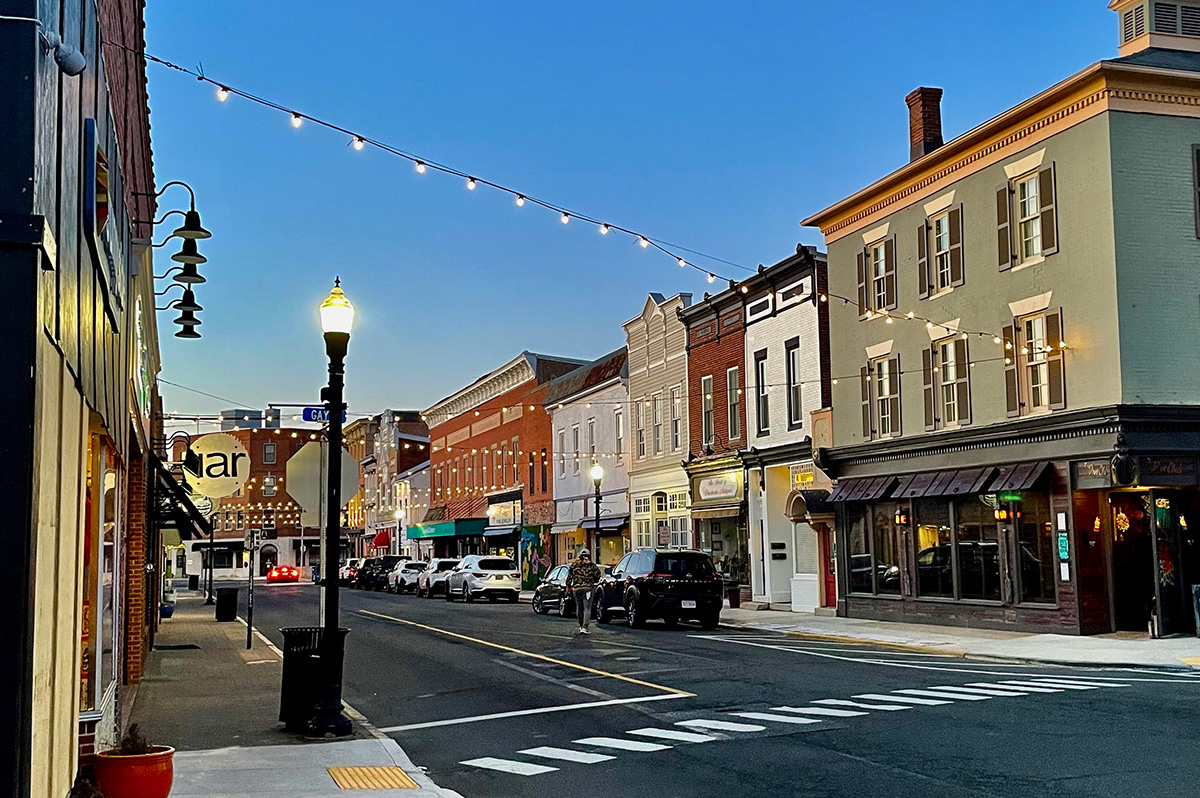
CAMBRIDGE, Md. — Driving through this scenic, historic town on Maryland’s Eastern Shore, you’ll be charmed by streets lined with unique shops, restaurants, and beautifully restored Victorian homes. You’ll also be struck by the number of LGBTQ Pride flags flying throughout the town.
The flags are a reassuring signal that everyone is welcome here, despite the town’s location in ruby red Dorchester County, which voted for Donald Trump over Kamala Harris by a lopsided margin. But don’t let that deter you from visiting. A new organization, Proudly Cambridge, is holding its debut Pride event this weekend, touting the town’s welcoming, inclusive culture.
“We stumbled on a beautiful secret and we wanted to help get the word out,” said James Lumalcuri of the effort to create Proudly Cambridge.
The organization celebrates diversity, enhances public spaces, and seeks to uplift all that Cambridge has to share, according to its mission statement, under the tagline “You Belong Here.”
The group has so far held informal movie nights and a picnic and garden party; the launch party is June 28 at the Cambridge Yacht Club, which will feature a Pride celebration and tea dance. The event’s 75 tickets sold out quickly and proceeds benefit DoCo Pride.
“Tickets went faster than we imagined and we’re bummed we can’t welcome everyone who wanted to come,” Lumalcuri said, adding that organizers plan to make “Cheers on the Choptank” an annual event with added capacity next year.
One of the group’s first projects was to distribute free Pride flags to anyone who requested one and the result is a visually striking display of a large number of flags flying all over town. Up next: Proudly Cambridge plans to roll out a program offering affirming businesses rainbow crab stickers to show their inclusiveness and LGBTQ support. The group also wants to engage with potential visitors and homebuyers.
“We want to spread the word outside of Cambridge — in D.C. and Baltimore — who don’t know about Cambridge,” Lumalcuri said. “We want them to come and know we are a safe haven. You can exist here and feel comfortable and supported by neighbors in a way that we didn’t anticipate when we moved here.”
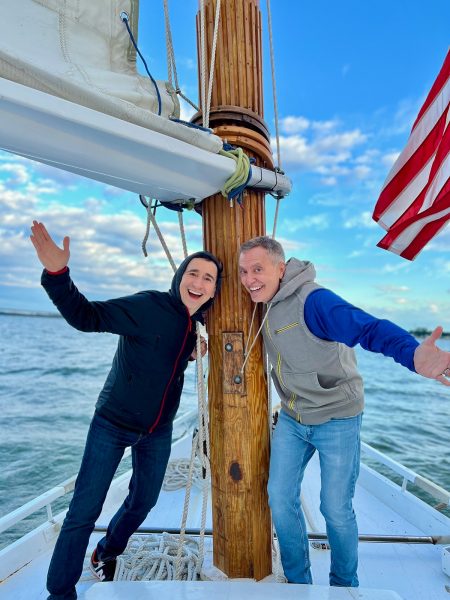
Lumalcuri, 53, a federal government employee, and his husband, Lou Cardenas, 62, a Realtor, purchased a Victorian house in Cambridge in 2021 and embarked on an extensive renovation. The couple also owns a home in Adams Morgan in D.C.
“We saw the opportunity here and wanted to share it with others,” Cardenas said. “There’s lots of housing inventory in the $300-400,000 range … we’re not here to gentrify people out of town because a lot of these homes are just empty and need to be fixed up and we’re happy to be a part of that.”
Lumalcuri was talking with friends one Sunday last year at the gazebo (affectionately known as the “gayzebo” by locals) at the Yacht Club and the idea for Proudly Cambridge was born. The founding board members are Lumalcuri, Corey van Vlymen, Brian Orjuela, Lauren Mross, and Caleb Holland. The group is currently working toward forming a 501(c)3.
“We need visibility and support for those who need it,” Mross said. “We started making lists of what we wanted to do and the five of us ran with it. We started meeting weekly and solidified what we wanted to do.”
Mross, 50, a brand strategist and web designer, moved to Cambridge from Atlanta with her wife three years ago. They knew they wanted to be near the water and farther north and began researching their options when they discovered Cambridge.
“I had not heard of Cambridge but the location seemed perfect,” she said. “I pointed on a map and said this is where we’re going to move.”
The couple packed up, bought a camper trailer and parked it in different campsites but kept coming back to Cambridge.
“I didn’t know how right it was until we moved here,” she said. “It’s the most welcoming place … there’s an energy vortex here – how did so many cool, progressive people end up in one place?”
Corey van Vlymen and his husband live in D.C. and were looking for a second home. They considered Lost River, W.Va., but decided they preferred to be on the water.
“We looked at a map on both sides of the bay and came to Cambridge on a Saturday and bought a house that day,” said van Vlymen, 39, a senior scientist at Booz Allen Hamilton. They’ve owned in Cambridge for two years.
They were drawn to Cambridge due to its location on the water, the affordable housing inventory, and its proximity to D.C.; it’s about an hour and 20 minutes away.
Now, through the work of Proudly Cambridge, they hope to highlight the town’s many attributes to residents and visitors alike.
“Something we all agree on is there’s a perception problem for Cambridge and a lack of awareness,” van Vlymen said. “If you tell someone you’re going to Cambridge, chances are they think, ‘England or Massachusetts?’”
He cited the affordability and the opportunity to save older, historic homes as a big draw for buyers.
“It’s all about celebrating all the things that make Cambridge great,” Mross added. “Our monthly social events are joyful and celebratory.” A recent game night drew about 70 people.
She noted that the goal is not to gentrify the town and push longtime residents out, but to uplift all the people who are already there while welcoming new visitors and future residents.
They also noted that Proudly Cambridge does not seek to supplant existing Pride-focused organizations. Dorchester County Pride organizes countywide Pride events and Delmarva Pride was held in nearby Easton two weeks ago.
“We celebrate all diversity but are gay powered and gay led,” Mross noted.
To learn more about Proudly Cambridge, visit the group on Facebook and Instagram.
What to see and do
Cambridge, located 13 miles up the Choptank River from the Chesapeake Bay, has a population of roughly 15,000. It was settled in 1684 and named for the English university town in 1686. It is home to the Harriet Tubman Museum, mural, and monument. Its proximity to the Blackwater National Wildlife Refuge makes it a popular stop for birders, drawn to more than 27,000 acres of marshland dubbed “the Everglades of the north.”
The refuge is walkable, bikeable, and driveable, making it an accessible attraction for all. There are kayaking and biking tours through Blackwater Adventures (blackwateradventuresmd.com).
Back in town, take a stroll along the water and through historic downtown and admire the architecture. Take in the striking Harriet Tubman mural (424 Race St.). Shop in the many local boutiques, and don’t miss the gay-owned Shorelife Home and Gifts (421 Race St.), filled with stylish coastal décor items.
Stop for breakfast or lunch at Black Water Bakery (429 Race St.), which offers a full compliment of coffee drinks along with a build-your-own mimosa bar and a full menu of creative cocktails.
The Cambridge Yacht Club (1 Mill St.) is always bustling but you need to be a member to get in. Snapper’s on the water is temporarily closed for renovations. RaR Brewing (rarbrewing.com) is popular for craft beers served in an 80-year-old former pool hall and bowling alley. The menu offers burgers, wings, and other bar fare.
For dinner or wine, don’t miss the fantastic Vintage 414 (414 Race St.), which offers lunch, dinner, wine tasting events, specialty foods, and a large selection of wines. The homemade cheddar crackers, inventive flatbreads, and creative desserts (citrus olive oil cake, carrot cake trifle) were a hit on a recent visit.
Also nearby is Ava’s (305 High St.), a regional chain offering outstanding Italian dishes, pizzas, and more.
For something off the beaten path, visit Emily’s Produce (22143 Church Creek Rd.) for its nursery, produce, and prepared meals.
“Ten minutes into the sticks there’s a place called Emily’s Produce, where you can pay $5 and walk through a field and pick sunflowers, blueberries, you can feed the goats … and they have great food,” van Vlymen said.
As for accommodations, there’s the Hyatt Regency Chesapeake Bay (100 Heron Blvd. at Route 50), a resort complex with golf course, spa, and marina. Otherwise, check out Airbnb and VRBO for short-term rentals closer to downtown.
Its proximity to D.C. and Baltimore makes Cambridge an ideal weekend getaway. The large LGBTQ population is welcoming and they are happy to talk up their town and show you around.
“There’s a closeness among the neighbors that I wasn’t feeling in D.C.,” Lumalcuri said. “We look after each other.”
a&e features
James Baldwin bio shows how much of his life is revealed in his work
‘A Love Story’ is first major book on acclaimed author’s life in 30 years
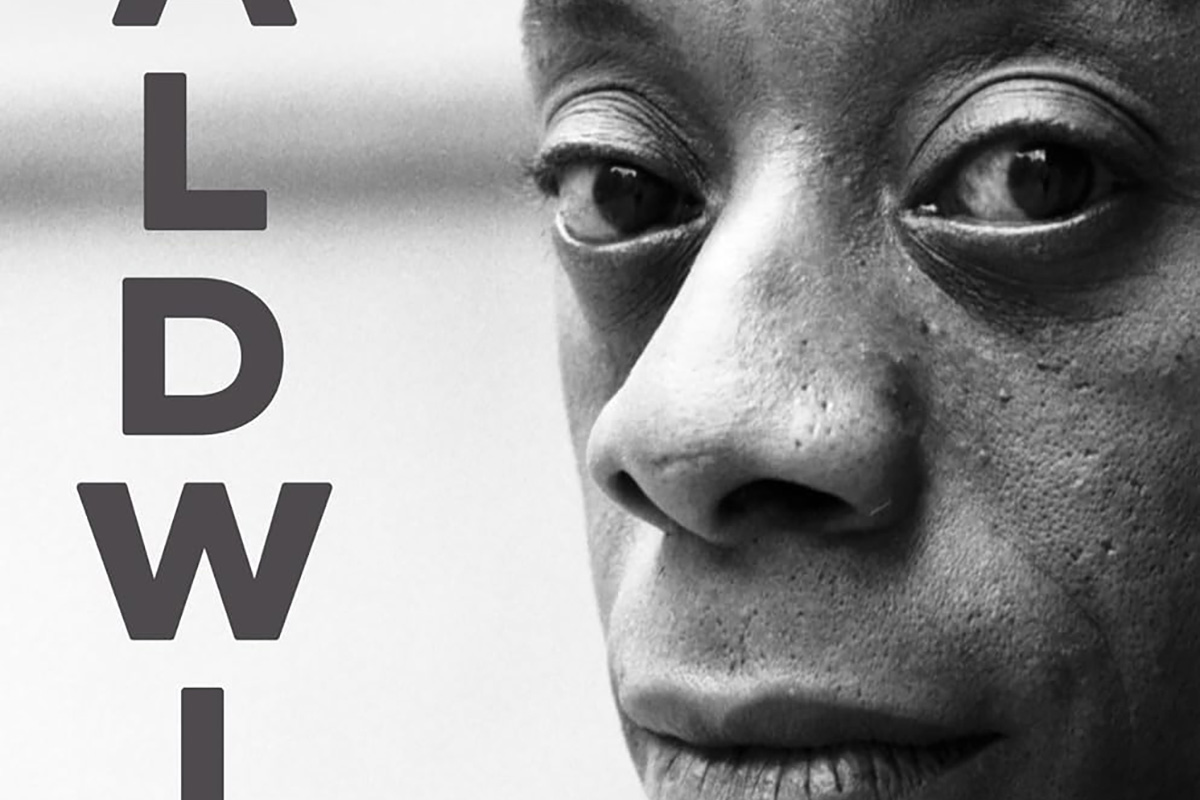
‘Baldwin: A Love Story’
By Nicholas Boggs
c.2025, FSG
$35/704 pages
“Baldwin: A Love Story” is a sympathetic biography, the first major one in 30 years, of acclaimed Black gay writer James Baldwin. Drawing on Baldwin’s fiction, essays, and letters, Nicolas Boggs, a white writer who rediscovered and co-edited a new edition of a long-lost Baldwin book, explores Baldwin’s life and work through focusing on his lovers, mentors, and inspirations.
The book begins with a quick look at Baldwin’s childhood in Harlem, and his difficult relationship with his religious, angry stepfather. Baldwin’s experience with Orilla Miller, a white teacher who encouraged the boy’s writing and took him to plays and movies, even against his father’s wishes, helped shape his life and tempered his feelings toward white people. When Baldwin later joined a church and became a child preacher, though, he felt conflicted between academic success and religious demands, even denouncing Miller at one point. In a fascinating late essay, Baldwin also described his teenage sexual relationship with a mobster, who showed him off in public.
Baldwin’s romantic life was complicated, as he preferred men who were not outwardly gay. Indeed, many would marry women and have children while also involved with Baldwin. Still, they would often remain friends and enabled Baldwin’s work. Lucien Happersberger, who met Baldwin while both were living in Paris, sent him to a Swiss village, where he wrote his first novel, “Go Tell It on the Mountain,” as well as an essay, “Stranger in the Village,” about the oddness of being the first Black person many villagers had ever seen. Baldwin met Turkish actor Engin Cezzar in New York at the Actors’ Studio; Baldwin later spent time in Istanbul with Cezzar and his wife, finishing “Another Country” and directing a controversial play about Turkish prisoners that depicted sexuality and gender.
Baldwin collaborated with French artist Yoran Cazac on a children’s book, which later vanished. Boggs writes of his excitement about coming across this book while a student at Yale and how he later interviewed Cazac and his wife while also republishing the book. Baldwin also had many tumultuous sexual relationships with young men whom he tried to mentor and shape, most of which led to drama and despair.
The book carefully examines Baldwin’s development as a writer. “Go Tell It on the Mountain” draws heavily on his early life, giving subtle signs of the main character John’s sexuality, while “Giovanni’s Room” bravely and openly shows a homosexual relationship, highly controversial at the time. “If Beale Street Could Talk” features a woman as its main character and narrator, the first time Baldwin wrote fully through a woman’s perspective. His essays feel deeply personal, even if they do not reveal everything; Lucian is the unnamed visiting friend in one who the police briefly detained along with Baldwin. He found New York too distracting to write, spending his time there with friends and family or on business. He was close friends with modernist painter Beauford Delaney, also gay, who helped Baldwin see that a Black man could thrive as an artist. Delaney would later move to France, staying near Baldwin’s home.
An epilogue has Boggs writing about encountering Baldwin’s work as one of the few white students in a majority-Black school. It helpfully reminds us that Baldwin connects to all who feel different, no matter their race, sexuality, gender, or class. A well-written, easy-flowing biography, with many excerpts from Baldwin’s writing, it shows how much of his life is revealed in his work. Let’s hope it encourages reading the work, either again or for the first time.
a&e features
Looking back at 50 years of Pride in D.C
Washington Blade’s unique archives chronicle highs, lows of our movement
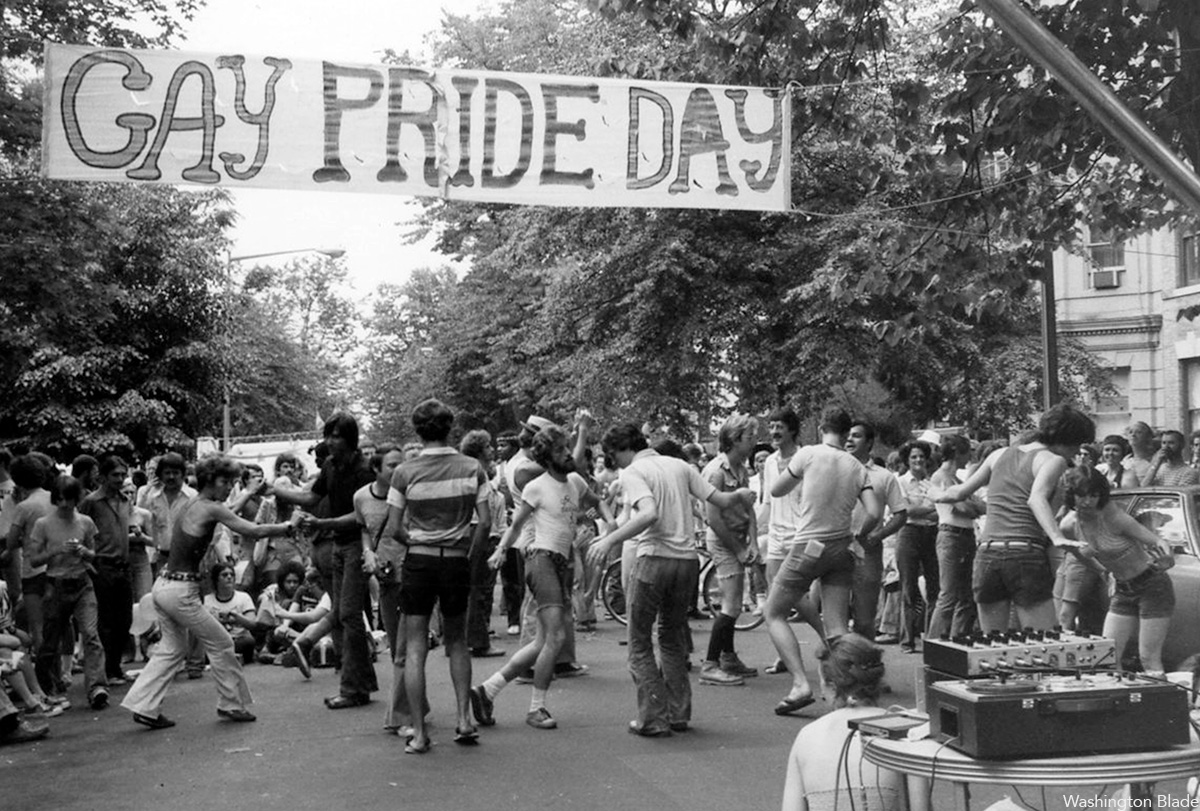
To celebrate the 50th anniversary of LGBTQ Pride in Washington, D.C., the Washington Blade team combed our archives and put together a glossy magazine showcasing five decades of celebrations in the city. Below is a sampling of images from the magazine but be sure to find a print copy starting this week.

The magazine is being distributed now and is complimentary. You can find copies at LGBTQ bars and restaurants across the city. Or visit the Blade booth at the Pride festival on June 7 and 8 where we will distribute copies.
Thank you to our advertisers and sponsors, whose support has enabled us to distribute the magazine free of charge. And thanks to our dedicated team at the Blade, especially Photo Editor Michael Key, who spent many hours searching the archives for the best images, many of which are unique to the Blade and cannot be found elsewhere. And thanks to our dynamic production team of Meaghan Juba, who designed the magazine, and Phil Rockstroh who managed the process. Stephen Rutgers and Brian Pitts handled sales and marketing and staff writers Lou Chibbaro Jr., Christopher Kane, Michael K. Lavers, Joe Reberkenny along with freelancer and former Blade staffer Joey DiGuglielmo wrote the essays.
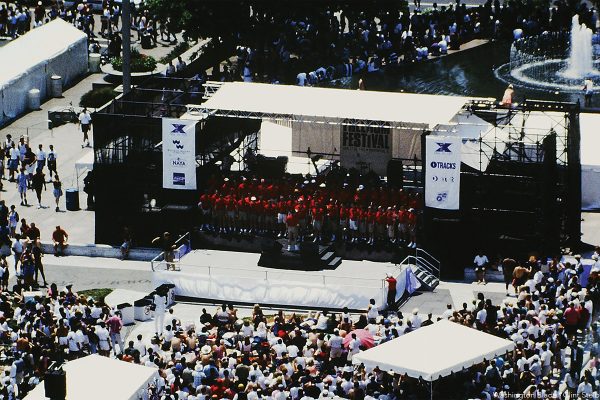
The magazine represents more than 50 years of hard work by countless reporters, editors, advertising sales reps, photographers, and other media professionals who have brought you the Washington Blade since 1969.
We hope you enjoy the magazine and keep it as a reminder of all the many ups and downs our local LGBTQ community has experienced over the past 50 years.
I hope you will consider supporting our vital mission by becoming a Blade member today. At a time when reliable, accurate LGBTQ news is more essential than ever, your contribution helps make it possible. With a monthly gift starting at just $7, you’ll ensure that the Blade remains a trusted, free resource for the community — now and for years to come. Click here to help fund LGBTQ journalism.
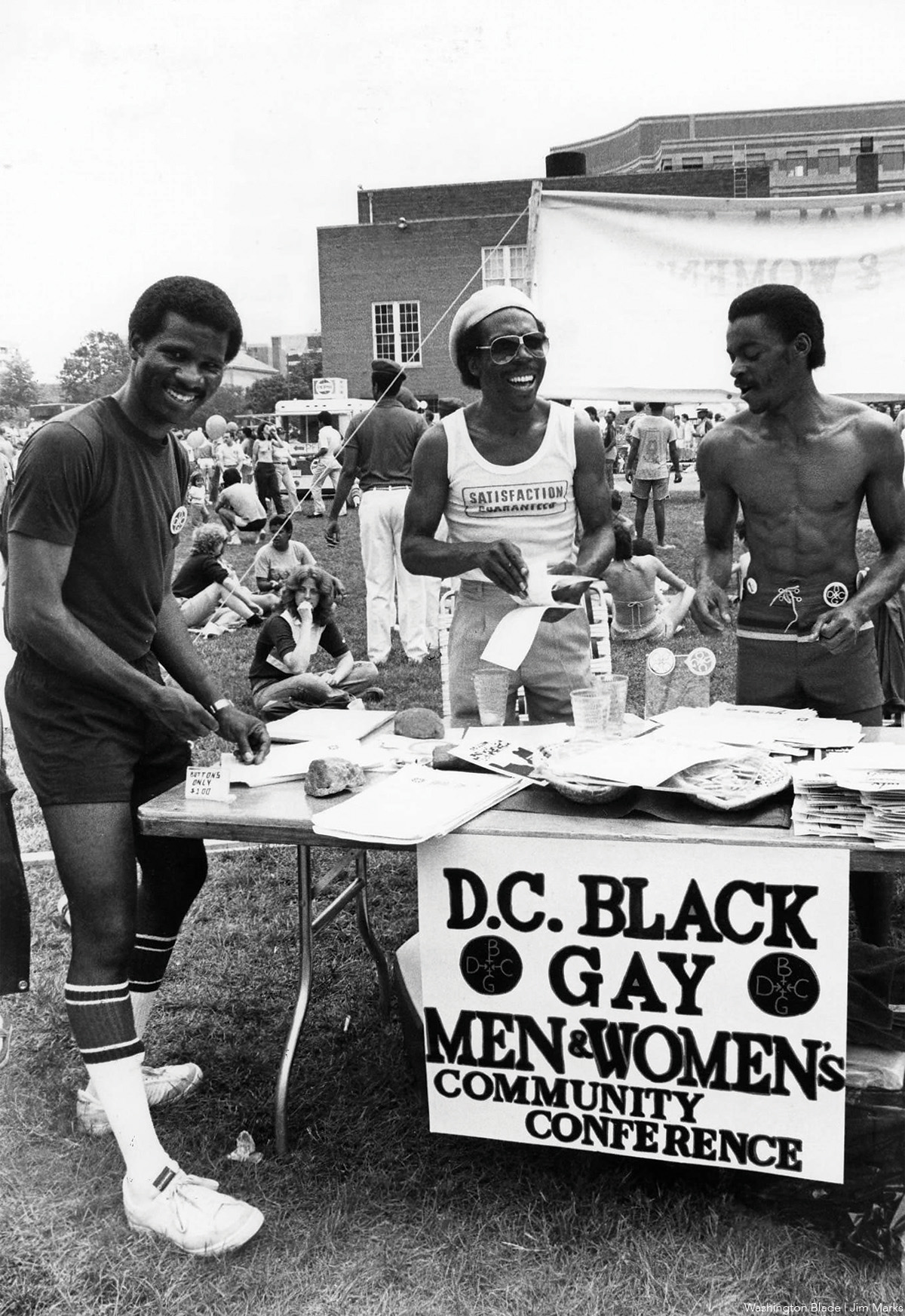

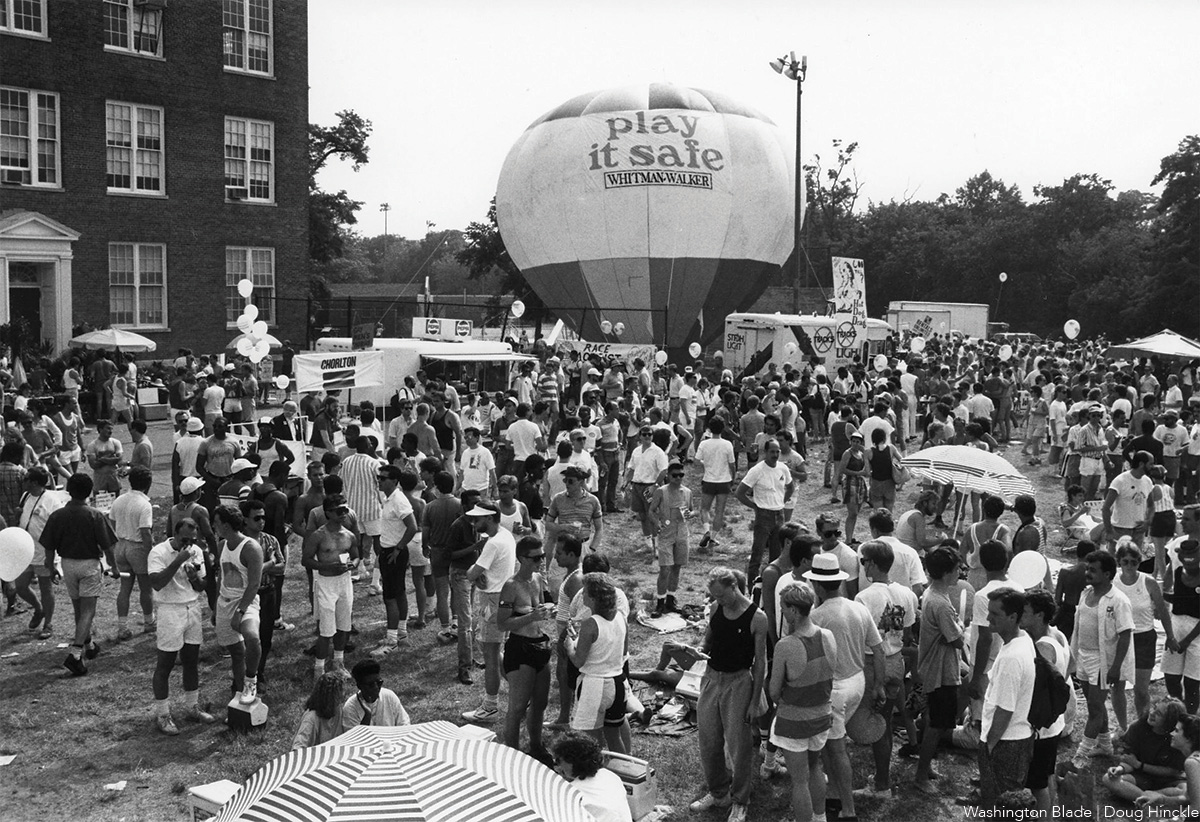
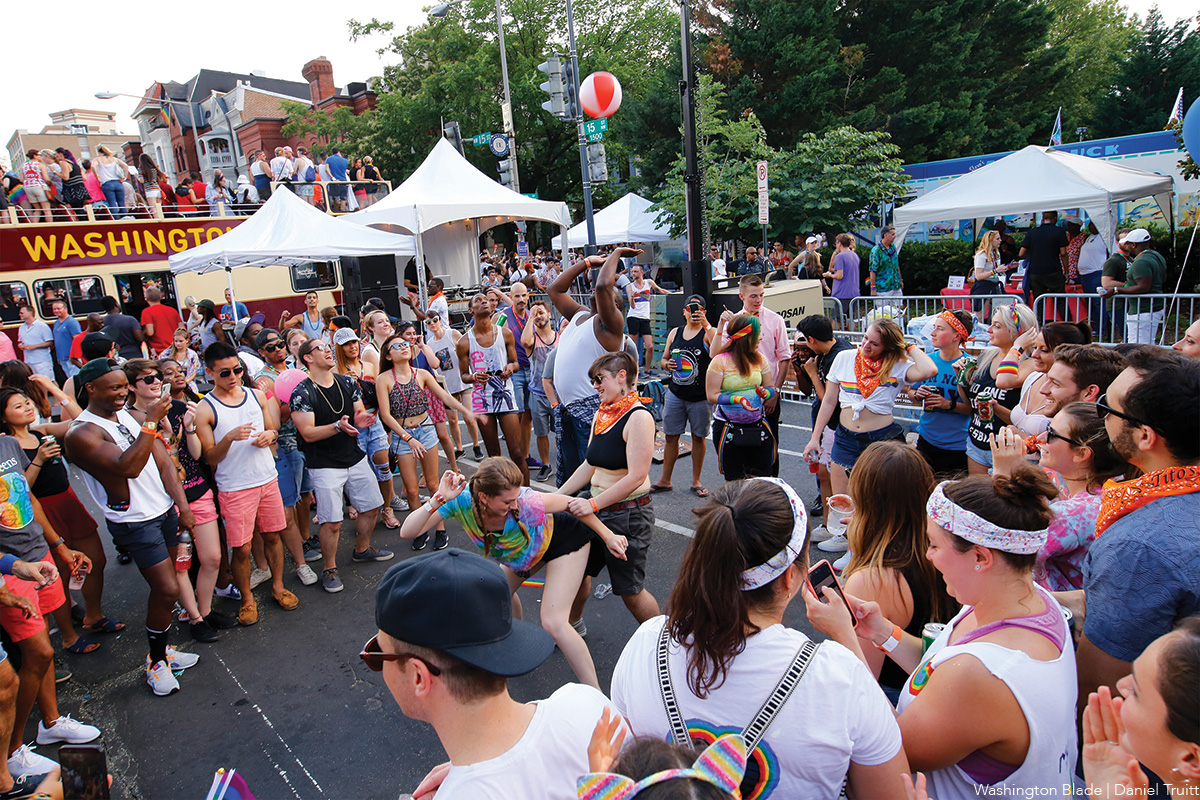
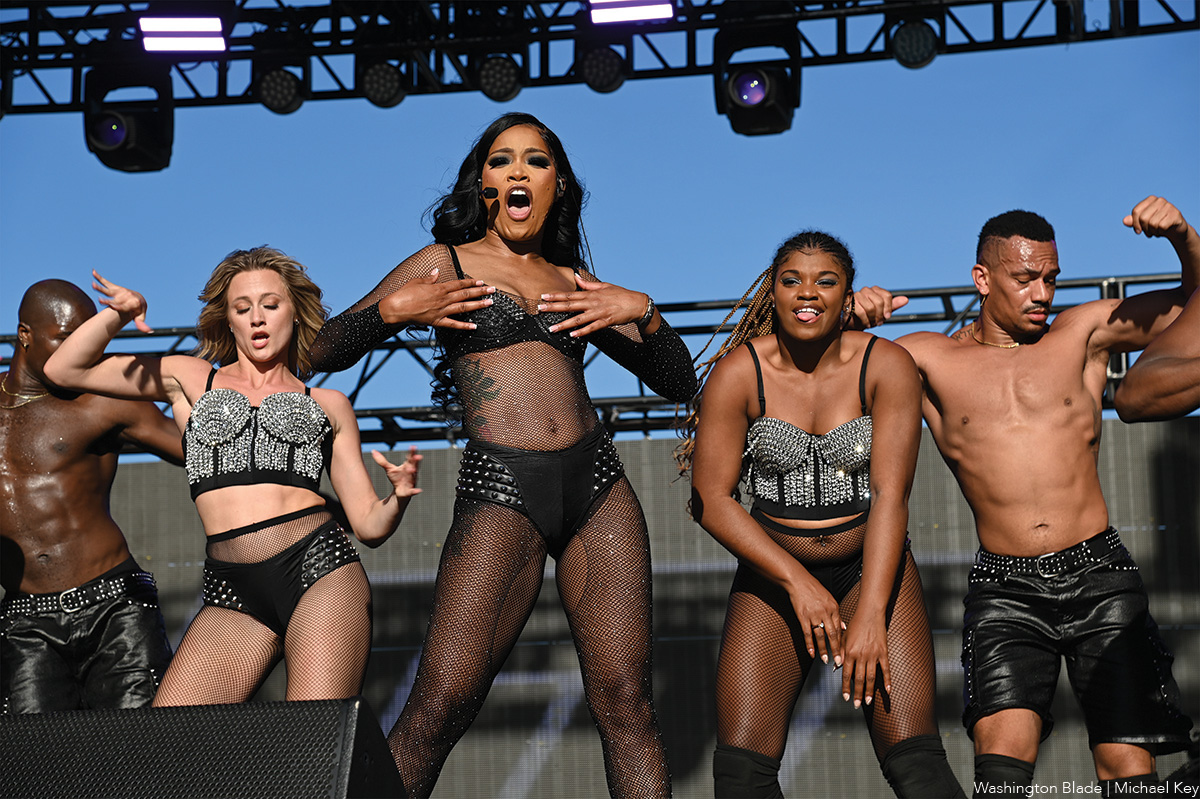
-

 U.S. Supreme Court3 days ago
U.S. Supreme Court3 days agoSupreme Court upholds ACA rule that makes PrEP, other preventative care free
-

 U.S. Supreme Court3 days ago
U.S. Supreme Court3 days agoSupreme Court rules parents must have option to opt children out of LGBTQ-specific lessons
-

 India5 days ago
India5 days agoIndian court rules a transgender woman is a woman
-

 National4 days ago
National4 days agoEvan Wolfson on the 10-year legacy of marriage equality

